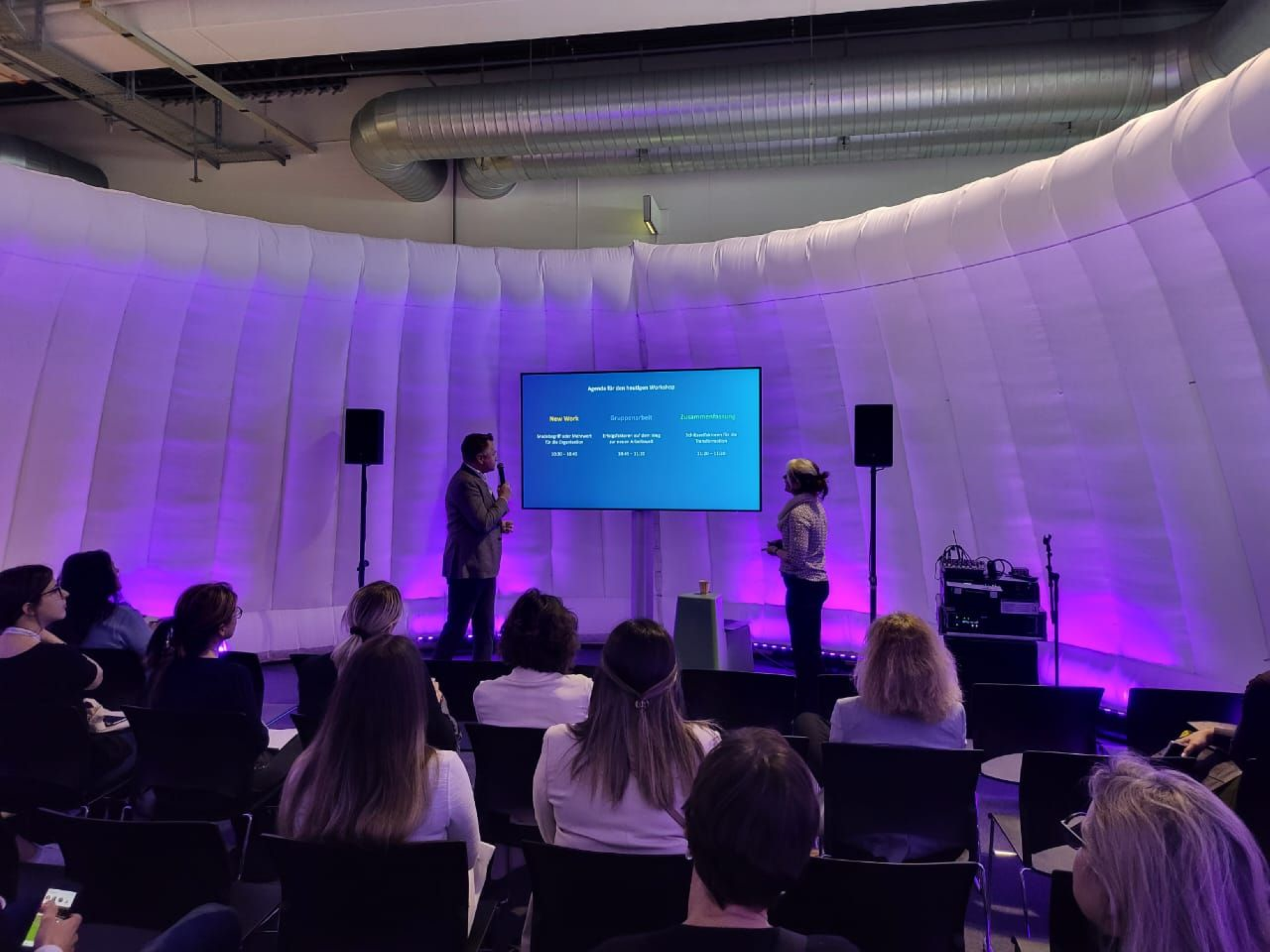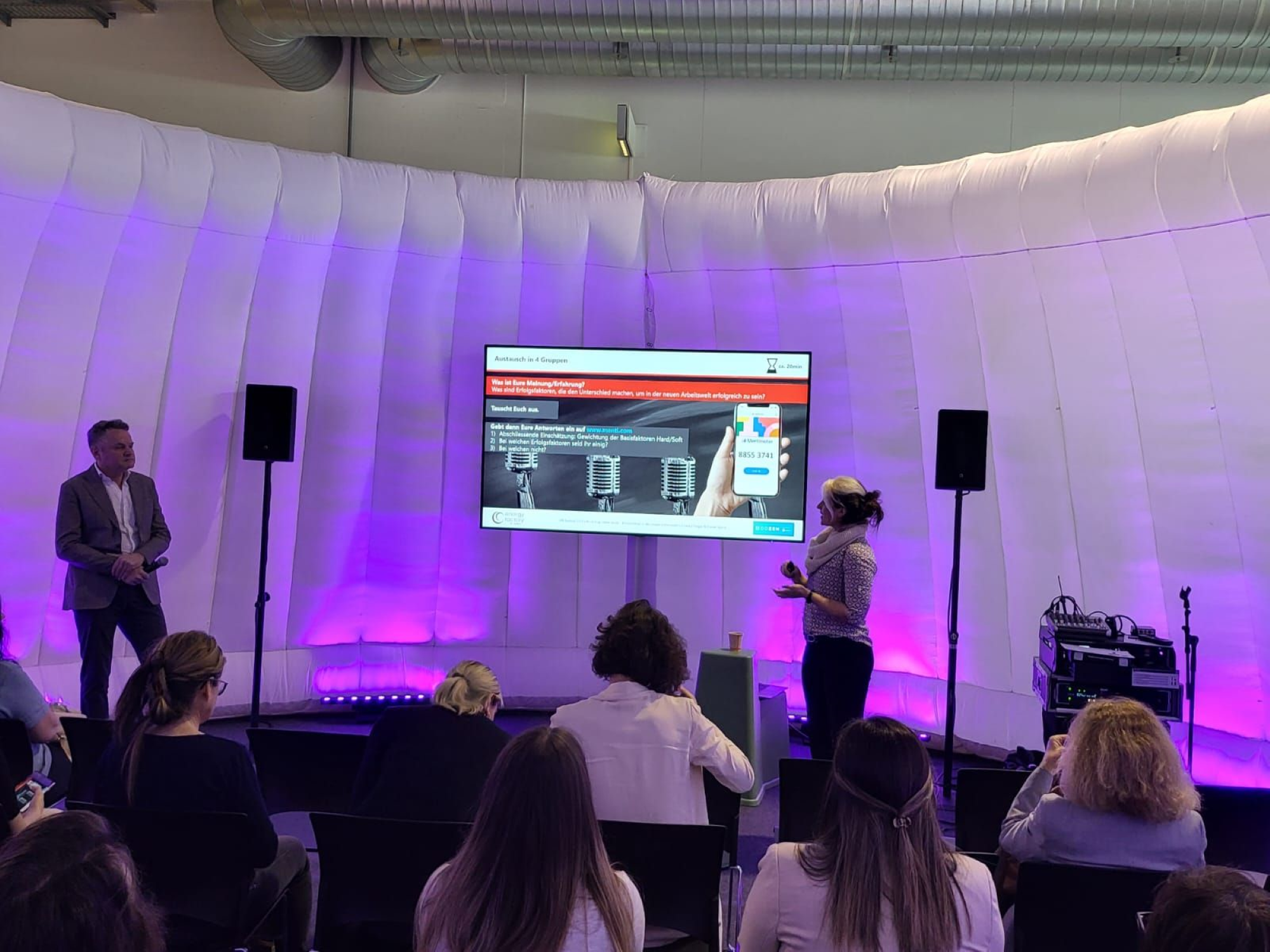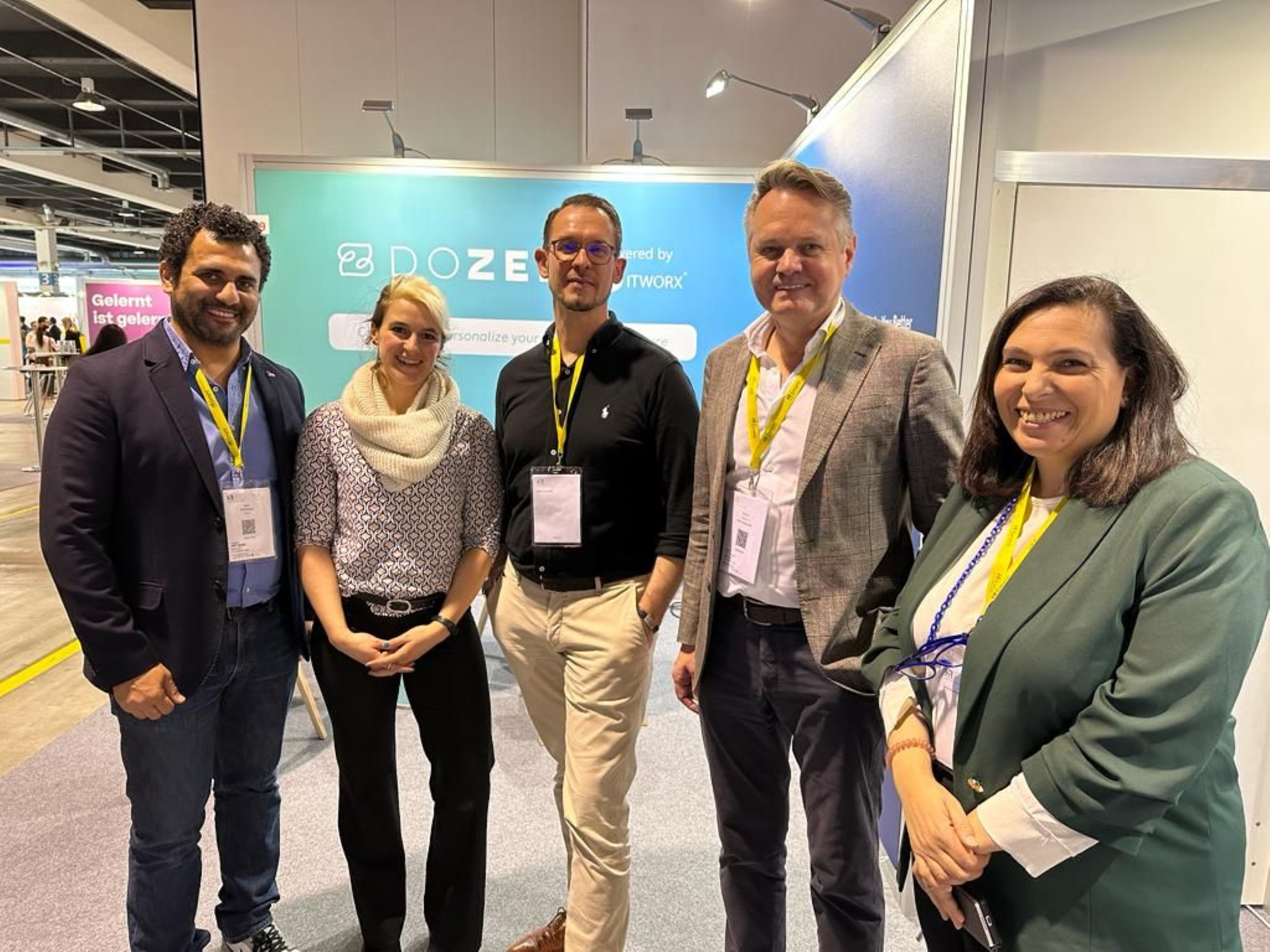Enhancing Productivity: A Marketer's #SuperHuman Guide to Generative AI Tools!
In the fast-paced marketing and content creation world, staying ahead of the competition and consistently producing high-quality content can be challenging. However, with the advent of generative AI tools like ChatGPT, marketers and content creators have a powerful ally that can significantly enhance their productivity. These AI-driven tools can streamline various tasks, improve content creation processes, and boost efficiency. In this guide, we will explore eight ways ChatGPT and generative AI tools can be leveraged to optimize productivity, along with practical sample prompts and generated content for each application.
This article begins by outlining how Open AI tools can help Marketers and Content Creators. The article also contains several use cases and sample prompts for industry professionals using Open AI tools to ramp up their productivity.
Download the full guiding article through this link!
Revolutionizing HR Content Creation with Generative AI: A Comprehensive Guide!
In the fast-paced landscape of HR, professionals strive to optimize processes, save time, and boost productivity. The advent of Generative AI tools has introduced a game-changing solution to the content creation challenges HR teams face. With the power of artificial intelligence, HR employees now have invaluable allies that can assist in crafting engaging job posts, comprehensive job descriptions, and draft response templates. In this article, we explore how Generative AI tools can revolutionize content creation in the HR domain, helping professionals achieve unparalleled efficiency and success.
Enhancing HR Content Creation with Open AI:
Open AI’s Generative AI tools offer many benefits for HR professionals across various domains. These tools can:
- Generate Compelling Job Posts: By harnessing the capabilities of Generative AI, HR professionals can create attention-grabbing job posts that effectively communicate the unique selling points of a position. The AI-powered language models can craft engaging narratives that attract top talent and enhance the company’s employer brand.
- Craft Comprehensive Job Descriptions: With Generative AI, HR teams can streamline the process of crafting thorough job descriptions. The AI-powered tools analyze existing data and industry trends to help create detailed and informative descriptions, ensuring potential candidates clearly understand the role’s responsibilities and requirements.
- Generate Draft Response Templates: Responding to candidate inquiries can be time-consuming. Generative AI tools simplify the process by generating draft response templates that maintain a personalized touch. HR professionals can quickly customize and send responses, ensuring efficient communication with candidates throughout the hiring process.
Download the full guiding article through this link!
Revolutionizing Business Analysis: Master the Tools Fueling the Productivity Surge!
In today’s fast-paced business landscape, business analysts play a vital role in deciphering complex data, uncovering valuable insights, and driving strategic decisions. They need tools to streamline their workflow, enhance efficiency, and amplify productivity to stay ahead of the curve. Enter OpenAI tools, including powerful language models like ChatGPT, designed to revolutionize how business analysts work.
This article begins by outlining the general ways in which Open AI tools can help Business Analysts. The article also contains several use cases and sample prompts for Business Analysts looking to use Open AI tools to ramp up their productivity.
Download the full guiding article through this link!
From Words to Code: Empowering Developers with Natural Language Code Generation
You can use ChatGPT to generate syntactically correct code blocks, it can generate code in different languages, but it’s unlikely to produce fully functional or optimized code without proper testing and debugging. ChatGPT is a language model trained on natural language processing capable of generating human-like text, including code snippets, based on the input provided by the user. ChatGPT can be a useful tool for generating code templates or getting ideas on approaching a coding problem, but it should not be relied upon as the sole source of code generation without careful review and verification.
This article contains a full Use Case to guide developers in generating code from natural language descriptions.
Download the full guiding article through this link!
The Developer's Edition: Explaining and Researching a Technical Topic!
You can use ChatGPT to search for technical topics or ask it to explain technical issues simply by providing specific queries or questions related to the topic. ChatGPT has been trained on a large text corpus and can generate informative and relevant responses. Still, it’s essential to remember that its answers may only sometimes be entirely accurate or up to date on highly specialized or niche technical subjects. Therefore, verifying the information with additional sources is always a good idea to ensure its reliability and relevance.
In this article, we take you through our journey as we use ChatGPT to search for – and explain- topics. The report contains several use cases that will significantly benefit developers looking to fully unlock the potential offered by ChatGPT and other Generative AI tools.
Download the full guiding article through this link!
Pre-sales in the Age of Generative AI!
ChatGPT can help sales teams save time and increase productivity by providing them with quick access to relevant information, enabling them to engage with potential customers more effectively, and delivering personalized experiences that drive conversions. As an AI language model, ChatGPT can help in various ways in pre-sales activities!
- Product knowledge: ChatGPT can help sales teams by providing them with in-depth product knowledge. As a language model, ChatGPT can answer questions about your products and services, provide technical specifications, and explain features and benefits to potential customers.
- Lead generation: ChatGPT can assist in generating leads by identifying potential customers who may be interested in your products or services. It can help sales teams create targeted marketing campaigns that resonate with potential customers by analyzing customer behavior and preferences.
- Sales presentations: ChatGPT can assist in creating sales presentations and demos that highlight the unique value proposition of your products or services. It can help you make a lasting impression on your potential customers by incorporating text, images, and multimedia content.
- Proposal development: ChatGPT can assist in developing proposals and responding to requests for proposals (RFPs). By analyzing RFP requirements and leveraging natural language processing capabilities, ChatGPT can help you create well-written, comprehensive, and compelling proposals that demonstrate how your products or services can meet customer needs.
- Technical support: ChatGPT can assist in providing technical support to potential customers by answering their questions and resolving their technical issues. By leveraging my natural language processing capabilities, ChatGPT understands customer queries and provides accurate and relevant responses in real-time.
To find how you can master some Pre-Sales prompts and optimize Generative AI output, download our full guide here!
DoZen: Employee Experience in the Era of New Work!
‘New Work’ has ushered in an era of transformation for organizations around the globe. Organizations are increasingly looking to weigh the benefits of adopting New Work policies against the cost of doing so. Perhaps, what makes organizations most hesitant to embrace the shift is the cloudiness of the road to deploying effective transformations; indeed, without a blueprint that defines and explains the factors needed to implement New Work successfully and effectively at an organizational level.


Under the umbrella of HR Festival Europe (held in Zurich from March 26th to March 27th, 2023), DoZen’s team administered a workshop titled New Work – Success Factors for Changing the Working World? Delivered by seasoned Senior Consultant & Trainer Lena Effinger, and ITWorx Europe’s Senior Engagement Manager Daniel Spirig, the workshop was home to an insightful and engaging discourse on the factors needed to safeguard triumphant transitions to New Work.
More specifically, the workshop demonstrated how DoZen – ITWorx’s Employee Experience (EX) platform and digital workplace – can support enterprises adopting New Work by fostering a paradigm of enhanced and effective communications premised on the individualization of employee experience. In other words, DoZen can comprehensively and cohesively create the digital ecosystem and the ‘Hard Factors’ required to implement New Work transformations through its assortment of features.



In addition to the workshop, DoZen’s bright blue colors were strongly present in the Exhibitors’ Area. Through this booth, ITWorx’s team was able to administer lively demos and fully showcase the limitless possibilities offered by DoZen!
With ‘New Work’ being a somewhat general term and a novel praxis, aligning all organizational members on how their company understands and will implement it is necessary. Consequently, it is hugely integral that organizations clearly define the purpose of the change and the targeted change. ITWorx’s DoZen can effectively support the execution and completion of day-to-day business while fostering collaboration and providing organizations – and employees – with a one-stop-shop digital workplace built and made for the era of New Work!
To find out more about DoZen, click here!
AI: Navigating Questions of Privacy, Security, and Intellectual Property
ChatGPT states that the generated content may be copyrighted but does not belong to the AI itself.
In other words, the answers/generated output may be subject to copyright protection, depending on whether it can be considered a “work” that expresses the original views of an author or reflects uniquely creative content owned by the author in question.
Additionally, there are legal concerns about the misrepresentation of information:
Suppose I use ChatGPT to generate a perfect Cover Letter. Is this a fair, ethical, and legal way to transparently showcase my abilities to a hiring manager? Am I “working smart,” or am I misrepresenting the truth about myself, and the capabilities needed for the job? To what extent is an AI-generated/perfected CV and Cover Letter a true reflection of who I am as a person to the hiring manager? If, for example, I am not a friendly person, yet I have prompted ChatGPT to “alter the tone-of-voice in my Cover Letter,” then where do we legally draw the line between editorial help/guidance and misrepresentation of information?
To find out the answers to these questions, check out – and download – our full guide here!
AI: The Content Creator’s Manual!
While the examples of users generating content on ChatGPT may make it seem as though ChatGPT is eliminating the role of the content creator, a closer look at how ChatGPT works tells us a more nuanced narrative/truth about the part of the content creator in this process. To safeguard great content, the prompt given to ChatGPT needs to be as specific as possible.
As such, the role of the content creator/manager has shifted into a more strategic framework. While a content creator may not need to type up and edit content his/herself to ensure the provision of optimum content, the content creator’s role is now more of a “Prompt Engineer” role. In other words, the content creator/user needs to be a Subject Matter Expert in content creation generally or in the subject matter of the required deliverable, more specifically, to safeguard the production of usable quality content. As such, content creators still play significant/indispensable roles as “Prompt Engineers.”
To find out more about the evolving roles of content creators, check out – and download – our full guide here!
What is Generative AI?
Unless you have been living under a rock, you’ve probably heard about the booming trend of ‘Generative AI’ 😉
What is generative AI, and what is the relationship between generative AI and Deep Learning?
In this article, we will shed some light on this topic and list some of the applications for generative AI that have started to boom worldwide.
Understanding Generative AI
A subset of artificial intelligence methods, Generative AI, aims to produce unique, imaginative, and indistinguishable from human-created content. It includes a range of neural networks, models, and algorithms trained on enormous amounts of data to recognize patterns, styles, and structures. Algorithms using generative AI can produce new coherent, pertinent information to a particular domain.
Generative AI and Deep Learning are closely related. Generative AI is, in fact, a subfield of Deep Learning. Deep Learning is a branch of Machine Learning that involves training artificial neural networks to learn and make predictions from input data. Deep Learning models are typically composed of multiple layers of interconnected neurons, and they are trained using large datasets to learn complex patterns and relationships.
Generative AI, on the other hand, is focused on creating new data that is similar to the training data. Generative AI algorithms are designed to learn the underlying distribution of the training data and generate new data points similar to the original data. This can be used for various applications, such as generating realistic images, music, or text.
Deep Learning is used extensively in Generative AI, as many generative models are based on neural networks. For example, Generative Adversarial Networks (GANs) are a popular type of Generative AI model that use two neural networks to generate new data. One network generates the data, while the other tries to distinguish between the generated and the actual data. The two networks are trained together, and over time, the generator network learns to create data that is indistinguishable from the real data.
In summary, Generative AI is a subfield of Deep Learning that focuses on creating new data similar to the training data, and many generative models are based on neural networks.
Applications of Generative AI
Generative AI has a wide range of potential applications across various fields. Download our comprehensive superhuman AI Guide by clicking this link!










